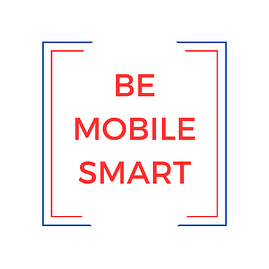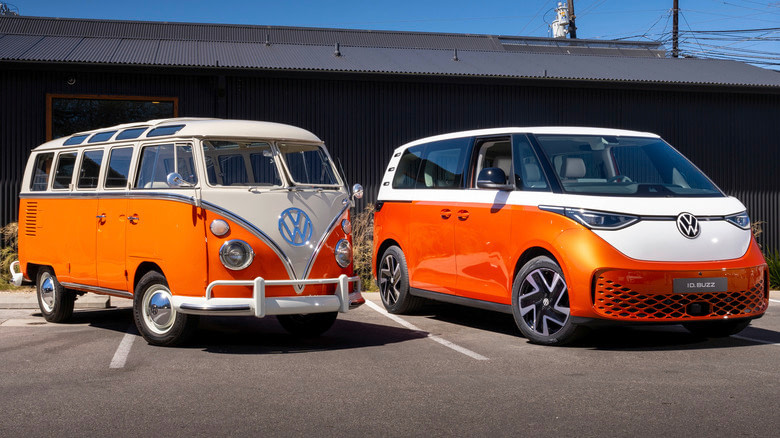The boxy VW van was often called the “Magic Bus” but it’s going to lose that treasured name now that it’s been reintroduced as an electric vehicle (EV). In appearance, the 2024-25 VW ID.Buzz (aka, Buzz) pays homage to the extended wheelbase, high roof line, and two-tone paint of the original VW bus. But this electric version comes up short with an EPA combined range of only 234 miles (city + highway). It’s also slow off the mark for an EV, as it takes at least 6.7 seconds to go from 0 to 60 mph. So, the question is can it still be a magic bus in the EV World?
If you were born after 1980, you may not understand the excitement but (older) drivers smile just thinking about this newly skinned and electrified vehicle. The VW bus was beloved by an earlier generation. It was the flower-power van that hippies could ‘crash’ in to smoke or drink (i.e. ‘crash’ = ‘to gather‘). When decorated with peace symbols, it became a counter-culture statement. A Smithsonian historian imagines it as a statement against the over-powered V8 culture of American cars and commercialism.
Technically, VW stopped selling this beloved model in the 1970s. However, they kept an assembly line open in Brazil and had to make design changes to sell it internationally- updates like airbags, and better emissions.
Form or Miles?
It makes sense that VW would now update the van with a clean-fuel electric version, and perhaps forever bury their Diesel Gate legacy. Unfortunately, automotive reviews suggest that “boomer nostalgia” may not be enough to spur sales because the price is high and the range is low (by 2025 standards). But there’s also a disconnect, at least in this country, between what a van is intended to do, and what the ID. Buzz is capable of.
You would expect that people who purchase this van are likely to use it for camping, road trips, and scenic drives. But this Buzz can only go off the beaten track if there are fast Level 3 fast chargers as its range is subpar. With an optimistic 234 miles between charges, the Buzz is more of a fashion statement than a road-ready travel companion.
That said, the Buzz could have an alternative purpose, and a healthy one, in a different market. Vans have more interior space than SUVs when rear seats are removed and they keep cargo more secure than say a pick-up truck. So, in Europe and other markets, a less expensive Buzz might find a useful role in business trades. Back in the 1970s, and also in international markets, it has been repurposed as the Transporter, a commercial vehicle.
Legacy Problems:
The Buzz that landed in North America doesn’t work as a delivery van since the starting price is a steep $59,995 . More realistic models with better trim and dual motors cost thousands more. Hence, like so many other electric vehicles, the ID. Buzz competes in the up-scale luxury market. Unfortunately, there are some problematic factors since it was copied from a gasoline vehicle. For an EV, the teardrop or jellybean shape is more aerodynamic. That shape helps to reduce the drag and resistance, and improve range, especially at higher speeds. Weight is also an issue since they are battery-heavy. Safety matters most of all, and keeping a low center of gravity helps Tesla and other EVS easily meet and exceed NHTSA standards. The ID. Buzz does meet the standard 5 star safety standard set by the National Highway Traffic Safety Administration, but only gets four stars when it comes to rollover risk. For multiple reasons, boxy was good in the 1960’s and 1970’s but is outmoded for EVs.
Legacy automakers might find a lesson here. To keep the price down and the range up, they might need to design an electric car from scratch. The Chinese phone maker Xiaomi recently did this with their very popular SU7 model. It’s essentially a battery pack on wheels, although it copies the sweeping lines of a Porsche. It’s not a box.
More Races to Come:
One of the ironies of the ID.Buzz is that it’s not the first time this vehicle has gone electric For about ten years, beginning the 1970’s Volkswagen built electric T2 Buses and Transporters. They had a 32 kW motor and twenty four lead acid batteries. It’s claimed that they were the pace vehicle for the 1981 Boston Marathon, with a total range of about 25 miles. Seemingly the vehicle would reach the finish line as exhausted as the runner. But as VW has shown, there’s always another race.

